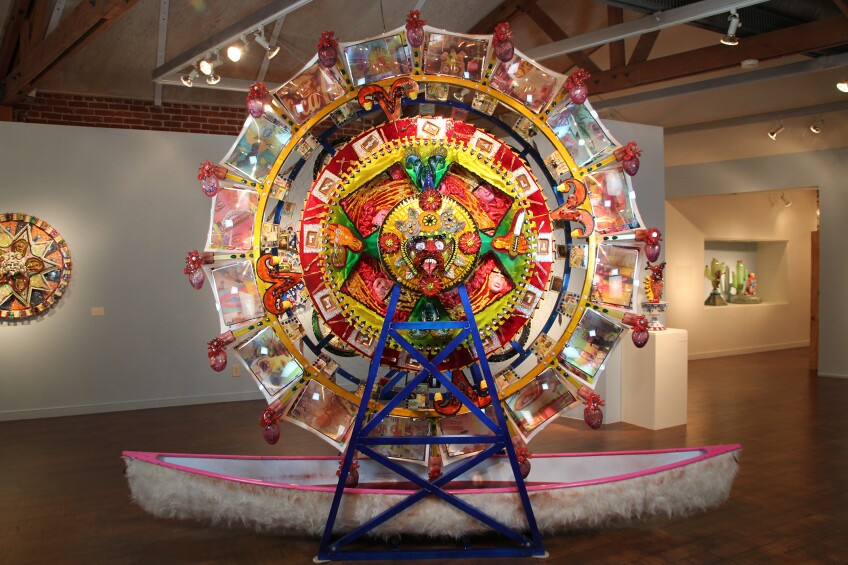
What to Expect at the Cheech Marin Center for Chicano Art & Culture
The Cheech Marin Center for Chicano Art & Culture of the Riverside Art Museum, known simply as the Cheech, opens this weekend in downtown Riverside. In just five years, this new 61,420-square foot space has transformed from a public library into a world-class museum that aims to show how Chicano art continues to affect our social, cultural and political landscapes.
"There's a lot of preconceptions of what [Chicano art] is," says the Cheech's artistic director María Esther Fernández, but she points out that "it has evolved and it's always been in conversation with global artistic movements."
"Cheech Collects," one of two inaugural exhibitions at the institution, gives viewers an opportunity to see the breadth of work by Chicano artists. The exhibition was curated from approximately 500 works from the personal collection of Cheech Marin, a third-generation Mexican-American comedian, filmmaker, actor and art advocate. Marin's collection is now part of the Riverside Art Museum's permanent collection. On view are works by the likes of Carlos Almaraz, Margaret Garcia, Judithe Hernández, Gilbert "Magú" Luján, Frank Romero and Patssi Valdez.
Marin is known today as a premiere Chicano art collector. Before making a home in Riverside, his collection, more than forty years in the making, has toured in over a dozen exhibitions and shown at more than 50 museums in the United States and Europe. "Chicano art was always political art," Marin says in a press release. "And year by year, it evolved into what it is today. It can be political. It can be non-political. It can be highly personal. But what I've learned over the years is that Chicano art reveals the sabor (flavor) of the community."
View a few of the works at the Cheech. Click left or right.












On the second floor is "Collidoscope: de la Torre Brothers Retro-Perspective," which explores the 30-year art practice of brothers Jamex and Einar de la Torre. Guest curated by Selene Preciado, the seven-month-long exhibition features more than 70 mixed-media works, including blown-glass sculptures and installation art and lenticulars whose imagery changes as viewers move from side to side.
The retrospective is in partnership with the Smithsonian's National Museum of the American Latino and, after its run in Riverside, will tour nationally at the Corning Museum of Glass, Crocker Art Museum and the Art Museum of South Texas.
The Cheech is located at 3581 Mission Inn Ave., Riverside California on the corner of Mission Inn Ave. and Orange Street in the downtown Riverside area. Admission is $15.95 for adults, with discounts available for seniors over 65, students, children and military personnel. Metered street and lot parking is available along Mission Inn Avenue and other downtown parking areas are also available. The Cheech is open Monday to Sunday 10 a.m. to 5 p.m. Closed Tuesdays in August. Open until 8 p.m. on Thursdays June 23, June 30, July 7 and August 4. Please check the Cheech's museum hours before visiting.





